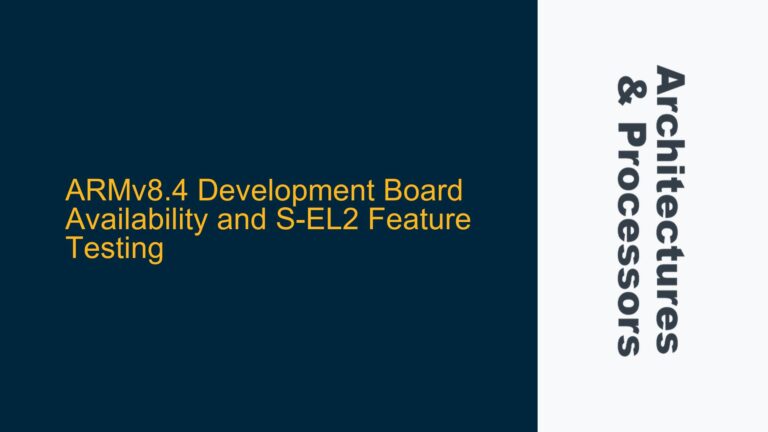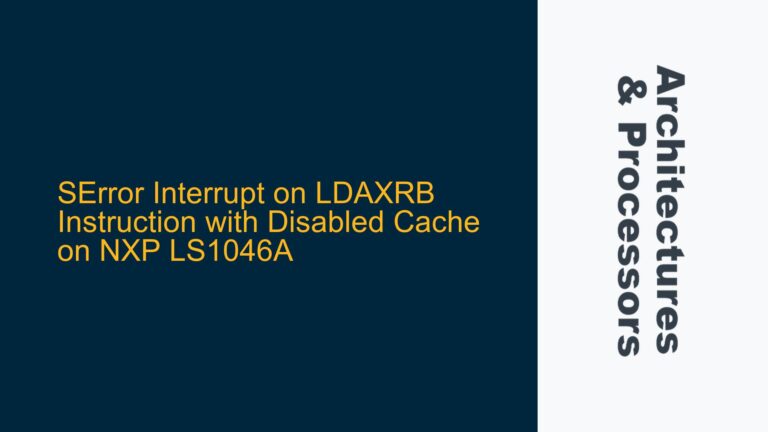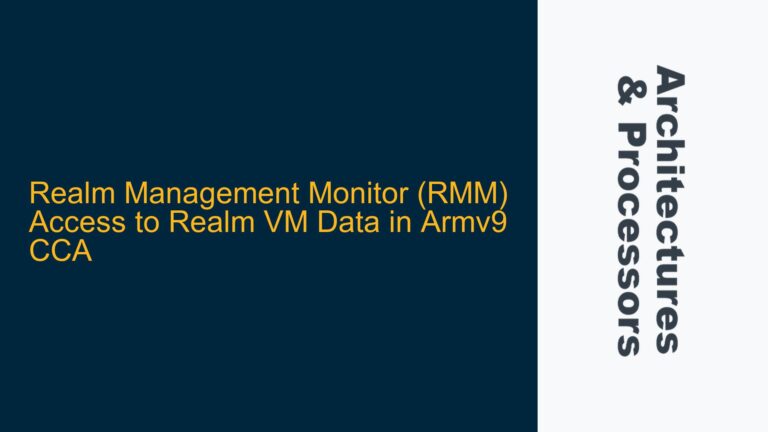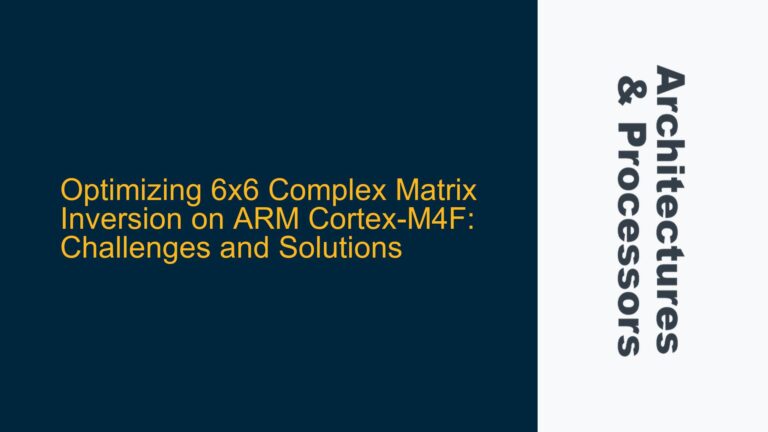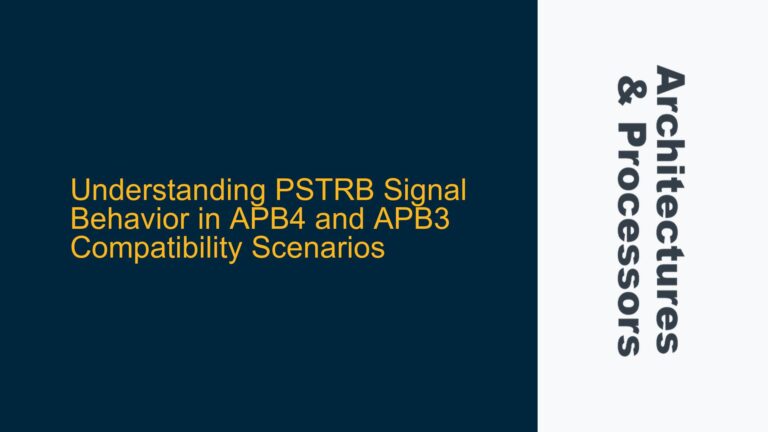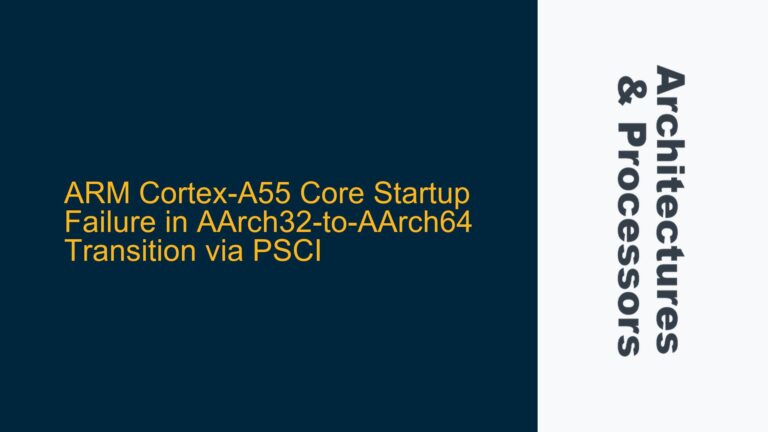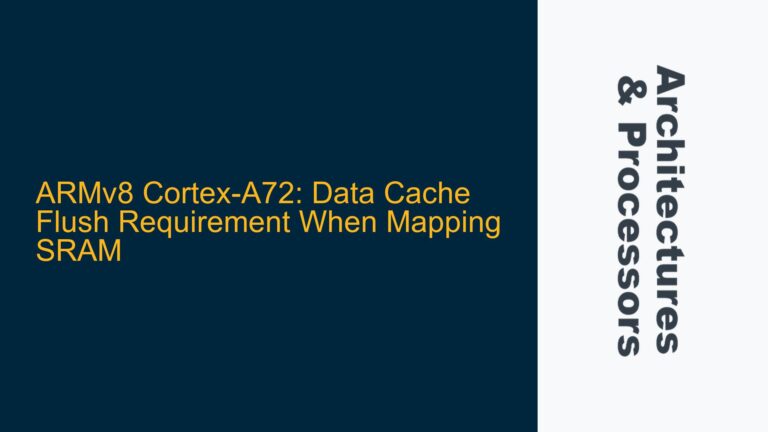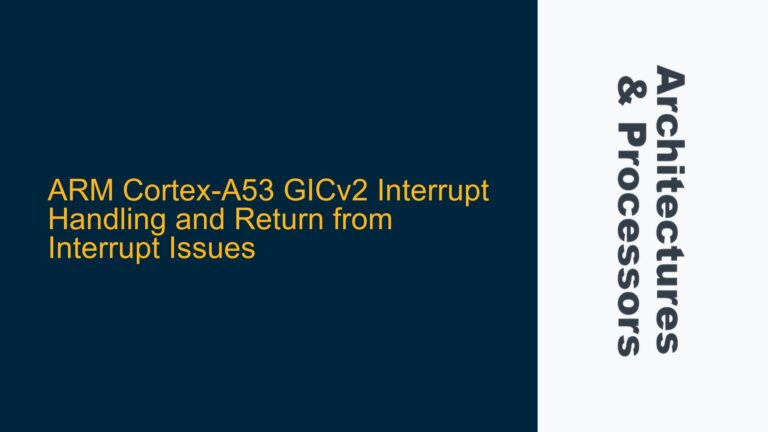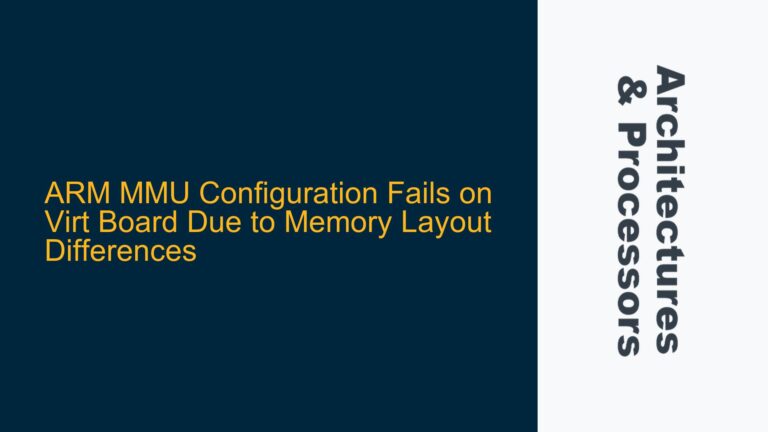ARMv8.4 Development Board Availability and S-EL2 Feature Testing
ARMv8.4 and S-EL2: Understanding the Requirements and Challenges ARMv8.4 is an extension of the ARMv8-A architecture, introducing several new features aimed at enhancing security, virtualization, and performance. One of the key features in ARMv8.4 is the Secure EL2 (S-EL2) exception level, which provides an additional layer of security for hypervisors in secure environments. S-EL2 allows…
